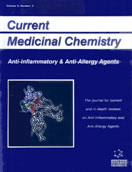Abstract
Antihistamines can be used in various disorders of dermatology. They are the mainstay of pharmacological therapy used in the management of urticaria and angioedema. They are also important in the management of atopic dermatitis, mastocytosis, eosinophilic disorders, contact dermatitis and flushing. Pruritus associated with other conditions such as lichen planus, pityriasis rosea, lichen simplex chronicus, dermatomyositis, amyloidosis, nummular dermatitis, exfoliative dermatitis, prurigo gravidarum, herpes gestationis, pruritic urticarial papules and plaques of pregnancy, erythema annulare centrifugum and erythema gyratum repens may also be relieved by antihistamines. Sedative antihistamines may help patients to reduce pruritus in scabies, prurigo nodularis, pruritus ani, lichen sclerosus and Grover disease. In bedbug, spider, human flea, bee, wasp, hornet or mosquito bites and in autosensitization dermatitis besides topical antipruritic agents, systemic antihistamines can be used against pruritus. Also, antihistamines may relieve pruritus in infestations, sponge dermatitis or cercarial dermatitis and can be used in varicella infection. Antihistamines are often helpful for relieving pruritus in exanthematous reactions to medications. Pruritus secondary to underlying medical disorders or of an idiopathic nature may also be relieved by these antihistamines, although controlled trials do not exist.
Keywords: antihistamine, dermatology, dermatitis, urticaria, atopic, pruritus
 5
5

